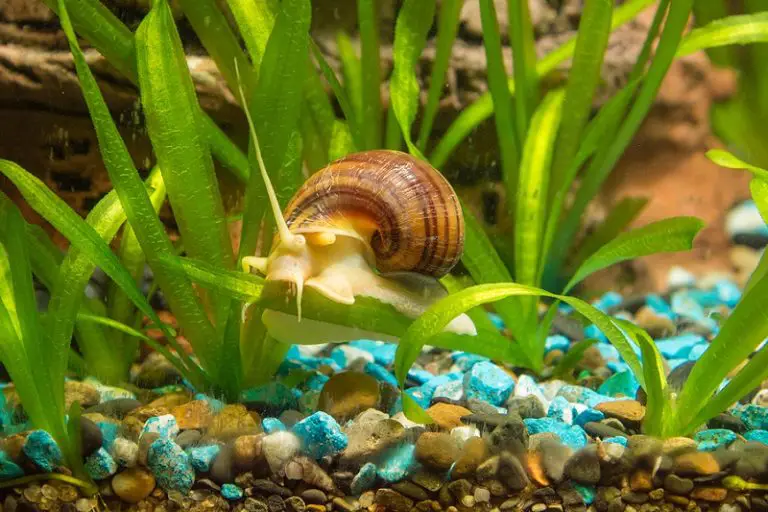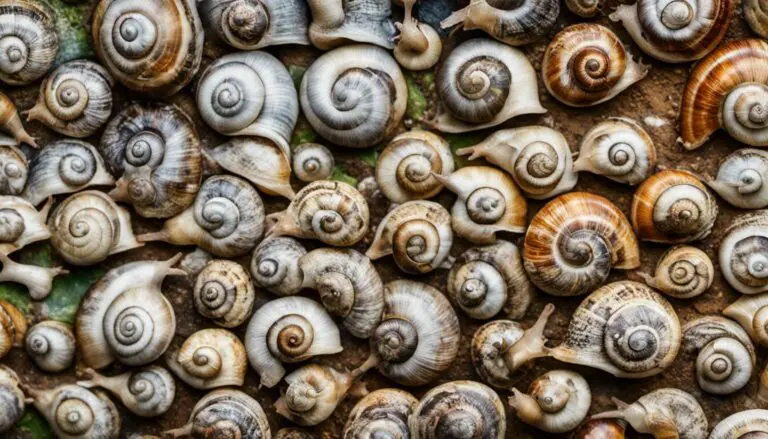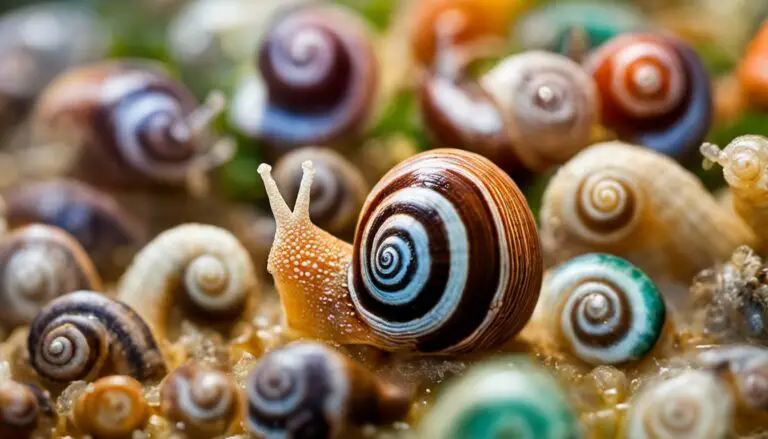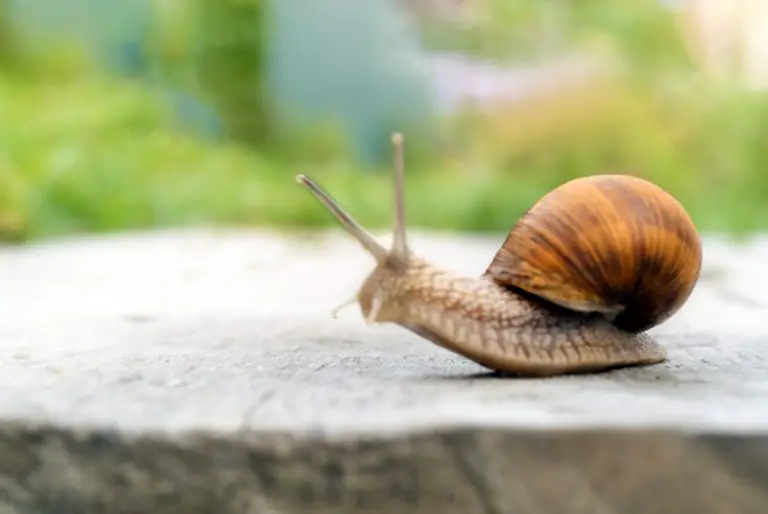Milk Snails: A Comprehensive Guide to Care and Breeding
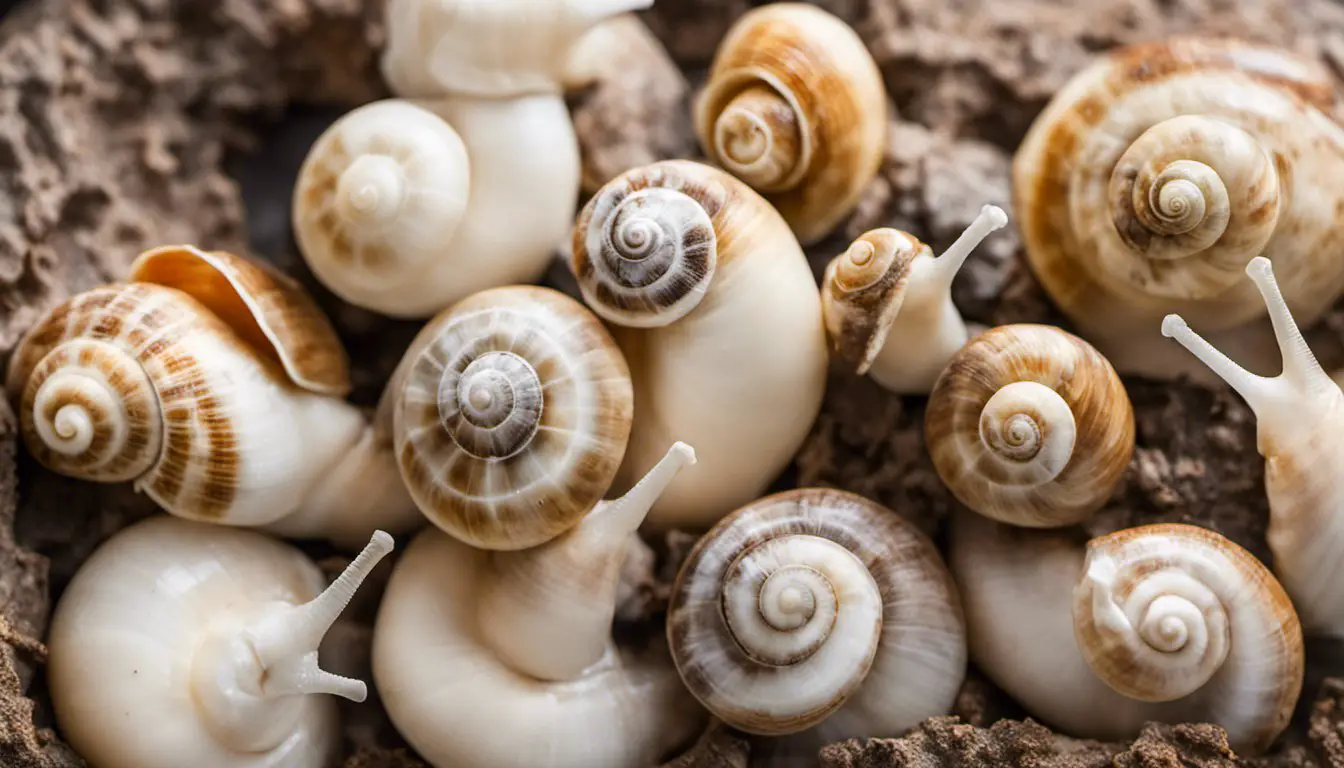
Scientifically known as Otala lactea, milk snails are fascinating air-breathing land snails. They belong to the Helicidae family, which encompasses typical snails found in various habitats. Milk snails are large and edible, having been consumed by humans since prehistoric times, as evidenced by archaeological findings at sites like Volubilis in Morocco.

As a versatile and adaptable gastropod species, milk snails can be found in different environments, making them the second most eaten land snail around the globe. However, it’s essential to be aware that they can sometimes be considered pests in certain areas due to their impact on plants and local ecosystems. By understanding their unique characteristics and behavior, you can better appreciate their role in nature and our shared history with these intriguing creatures.
If you’re looking to learn more about milk snails, remember that their shells exhibit a variety of colorations, usually featuring light brown with dark brown lines spiraling along their whorls. The proper care and maintenance of milk snails involve providing a suitable environment, such as moist soil for burrowing, and ensuring a diet of safe, live plants for them to consume.
As you explore the captivating world of snails, you’ll undoubtedly gain a newfound appreciation for these resilient creatures and their essential role in our ecosystems.
Contents
Table of Contents
General Overview
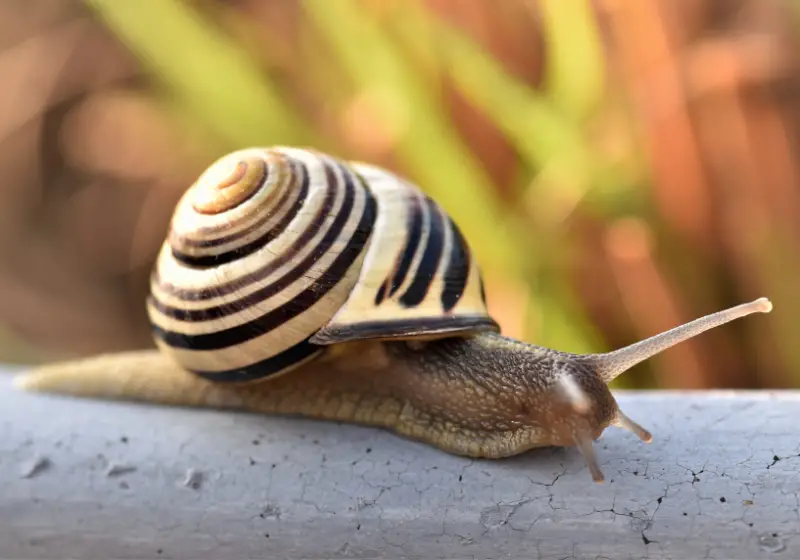
Classification
Milk snails, scientifically known as Otala lactea, belong to the family Helicidae. They are a type of terrestrial pulmonate gastropod mollusk, air-breathing land snails. These snails are also commonly referred to as Spanish snails.
Appearance and Physical Characteristics
Milk snails have a distinctive shell that can display a variety of colorations, usually light brown with dark brown lines spiraling along the shell’s whorls. As an air-breathing land snail, they possess a pulmonate gastropod mollusk, which allows them to thrive in terrestrial environments. Their size and unique physical characteristics make them easily identifiable among other snail species.
You can often find them in areas where plants are abundant, as they primarily feed on plant matter. They’re known for being quite adaptable and can survive in various environments. It’s important to note that milk snails can be considered a potential pest in some regions due to their appetite for vegetation.
Habitat and Distribution
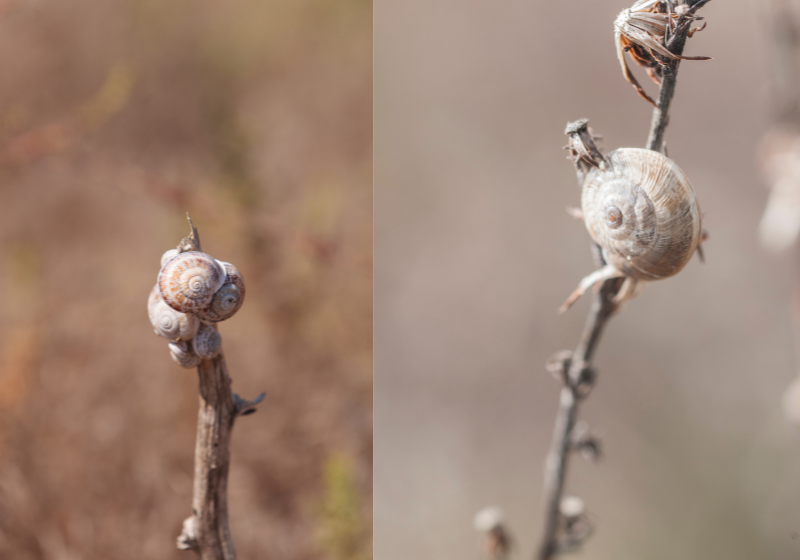
Native Habitat
The milk snail (Otala lactea) is originally native to the Mediterranean Basin, encompassing North Africa, Europe, and some parts of Southeastern Australia. In Africa, they can specifically be found in countries like Algeria, Morocco, and Tunisia.
These snails reside in various European countries, including Spain, Malta, and the Canary Islands. Additionally, the milk snail inhabits some Atlantic archipelagos, such as the Azores, Madeira, and the Cape Verde islands.
In its native habitat, the milk snail prefers living in rocky, bushy heathlands and steppes. These areas typically have a Mediterranean climate characterized by hot, dry summers and mild, wet winters.
Non-Native Distributions
The milk snail has spread to various non-native regions, primarily in the United States and the Caribbean. In America, the snail’s distribution ranges from California to Florida, with sightings in states such as Georgia, Kentucky, Louisiana, Maryland, Missouri, Mississippi, New York, Ohio, Pennsylvania, Texas, and Virginia.
Besides the continental U.S., milk snails have been spotted in other parts of North America, such as Bermuda and Arizona.
In the Caribbean, milk snails have been recorded in countries like Cuba. While there have been no reports of milk snails in Australia, other similar snail species are present in Southeastern Australia.
It’s important to note that when milk snails inhabit non-native regions, they usually adapt to hotter and more humid environments than their natural habitat. Consequently, they appear in smaller populations than their native regions.
All About Milk Snails!
Behavior and Ecology
Reproduction
Milk snails (Otala punctata) exhibit fascinating courtship behavior as a part of their reproductive process. During their mating ritual, they use a sharp, calcium carbonate structure called a love dart. Exchanging love darts between two snails increases their chances of successful fertilization. After this courtship, the snails will mate, and each participant may lay up to several dozens of eggs.
Eating and Digestion
The diet of milk snails mainly consists of vegetation, including leaves, fruits, and even decomposing plant material. They prefer softer foods like lettuce, which they can easily consume. To aid digestion, milk snails use a specialized tongue-like organ called the radula, covered in microscopic teeth that help grind and break down their food.
Survival Mechanisms
Milk snails possess several survival mechanisms, including the ability to undergo estivation. During extreme heat or drought, these air-breathing gastropods will retreat into their shells and form a mucus seal known as a diaphragm that helps retain moisture. Estivation allows these snails to survive such harsh conditions by significantly reducing their metabolic and breathing rates.
In addition, milk snails have developed specific behaviors to deal with potential threats. They cluster together, serving to protect and regulate their body temperatures.
By forming these clusters, milk snails can more effectively control their exposure to external temperatures, enabling them to cope with environmental changes and further increasing their chances of survival.
Human Interaction
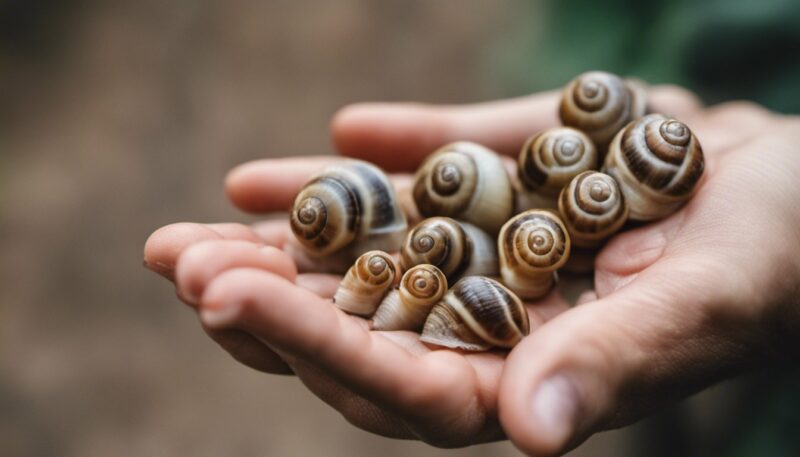
Milk Snails as Pets
Milk snails can be an interesting and low-maintenance option for a pet. Due to their size, they may require a larger enclosure than other land snails. Adding a source of calcium, such as a cuttlefish bone, to their enclosure can help them maintain their shells properly.
Remember that, as pets, it is essential to provide a proper diet, which usually consists of plants like leafy greens, fruits, and vegetables.
As a Food Source
Milk snails are edible and have been a human food source throughout history. They are the second most eaten gastronomic species around the world. Archaeological recovery at the Ancient Roman site of Volubilis, in Morocco illustrates humans’ prehistoric exploitation of O. lactea.
However, before consuming milk snails, it is essential to ensure they have been properly prepared and farmed from a safe environment, as they could potentially absorb toxins from their habitat.
Milk Snails as Invasive Species
While they may appear harmless, milk snails can also become invasive pests when introduced to new environments. Found mainly in Europe and the Mediterranean, they have been introduced to the USA and other parts of the world.
These snails may pose a threat to native plants and crops as they consume a variety of plant species. In some areas, owning or introducing milk snails may be illegal without approval from local authorities.
By understanding the potential risks and responsibilities of owning or consuming milk snails, you can decide whether they are the right choice.
Conclusion and Additional Resources: Milk Snails

By now, you should better understand milk snails (Otala lactea) and their role in the ecosystem. As a species of air-breathing land snail, they can make for interesting and educational pets.
If you plan to care for milk snails, it’s essential to research their needs thoroughly. For a comprehensive care guide, consider checking out websites like Escargot World that focus on snails and their proper care.
As part of the Helicidae family, milk snails showcase a rich history of human interaction. To further your knowledge of the species, examining archaeological finds such as the ones at Volubilis can offer a fascinating glimpse into our prehistoric relationship with these creatures.
As an enthusiast or researcher, you may also wish to explore databases and academic resources for accurate and up-to-date information. The World Register of Marine Species is an excellent resource for marine creatures, while organizations like the Texas Invasive Species Institute provide data on invasive species, like milk snails, in certain regions.
By leveraging these resources and continually expanding your knowledge, you can be confident in your understanding of milk snails and contribute positively to their conservation and appreciation.
Frequently Asked Questions
What is the lifespan of milk snails?
Milk snails (Otala lactea) have a lifespan of approximately 2-3 years, though it can vary depending on factors such as the snail’s habitat, diet, and overall care.
How to care for milk snails?
Caring for milk snails involves providing a suitable habitat with the right temperature and humidity levels. You’ll need an enclosure like a terrarium with a substrate such as coconut coir or sphagnum moss. Provide a dish of shallow water for your snail to drink from, and place a piece of cuttlebone in the enclosure for calcium consumption, which helps maintain shell health. Ensure a leafy greens and vegetables diet, and occasionally supplement with calcium-rich foods. Keep the habitat clean by removing uneaten food and waste regularly. More detailed information can be found here.
What is the difference between milk snails and garden snails?
Milk snails are a species of terrestrial gastropods with light-colored shells and milky secretion, hence their name. On the other hand, garden snails are a general term for various species of snails found in gardens, including the common garden snail (Cornu aspersum). While both are terrestrial and have similar care requirements, milk snails are more colorful and have distinct shell patterns than garden snails.
What is the natural habitat of milk snails?
Milk snails are native to the Mediterranean region, specifically in countries like Spain, Portugal, and Morocco. They thrive in temperate climates and can be found in various habitats such as grasslands, forests, and even coastal regions. Their adaptability makes them suitable for a wide range of conditions.
Are milk snails considered good pets?
Yes, milk snails can make great pets, especially for beginners or those looking for a low-maintenance pet. They are easy to care for, have relatively simple housing requirements, and their colorful shells often make them an attractive addition to homes, schools, or offices. However, like any other pet, you should plan to provide milk snails with proper care and attention for their well-being.
What are the regulations for keeping milk snails in the US?
While milk snails are not illegal to own as pets in the US, some states may have specific regulations or restrictions on their import, distribution, or sale due to concerns about their potential to become invasive species. Before acquiring one as a pet, you must check with your local and state laws regarding owning or transporting milk snails.

